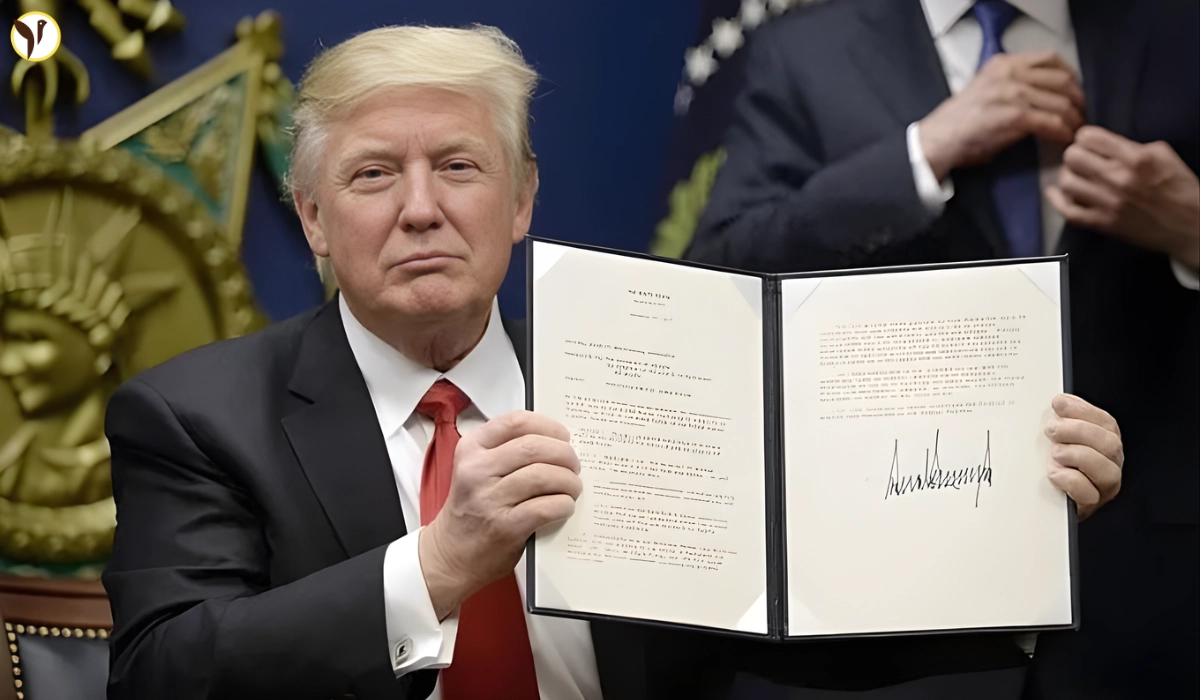In a major step for American politics, President Donald Trump officially signed the government funding bill on November 12, 2025, bringing the longest US government shutdown in history to an end. Federal workers and citizens are breathing a sigh of relief as government functions resume after 43 days of shutdown.
Did Trump Signs Funding Bill to Reopen Government?
At the White House, surrounded by Republican leaders, President Trump put pen to paper just two hours after the House of Representatives approved the bill by a 222-209 vote. The Senate had previously cleared the legislation, making the President’s signature the final step to restore federal funding through January 30, 2026.
Trump addressed the nation during the signing. He declared, “Today we are sending a clear message that we will never give in to extortion.” The comment reflects weeks of tense negotiations and debates over spending priorities in Congress.
What Caused the 2025 Government Shutdown?
The 2025 US government shutdown began on October 1, triggered by a deadlock over budget allocations in Congress. Both parties strongly disagreed on spending for border security, education, and social programs. This political standoff led to federal agencies closing their doors and vital services being suspended.
During the 43-day shutdown, over 800,000 federal employees were furloughed or worked without pay. Key programs, like food assistance and airport security, were heavily impacted. Air travel delays, long lines at food banks, and disruptions at national parks illustrated the shutdown’s real-world effects.
What Does the Funding Bill Include?
The new bill funds all government agencies until January 30, 2026. It restores pay for furloughed workers, reopens shuttered federal offices, and ensures vital programs—such as food aid and Social Security—resume without interruption.
Key Details:
-
All unpaid federal workers will receive back pay
-
Funding for the Agriculture Department keeps nutrition aid flowing
-
$203.5 million added to boost security for lawmakers; $28 million for Supreme Court justice security
-
Protection for federal employees from future layoffs, at least through upcoming months
This temporary funding deal is expected to pave the way for longer-term spending negotiations in Congress in early 2026.
Impact: Relief for Federal Workers and US Economy
The decision to end the shutdown means federal employees return to work immediately. The move should help ease strain on public services, from airport security staff to food assistance offices.
-
Millions who rely on government benefits will now see uninterrupted payments
-
Economic reports and important government data releases will resume
-
Businesses that depend on government contracts expect steady payments again
Many economists believe this timely resolution could help the US economy recover from weeks of uncertainty, just as the country heads into the busy holiday season.
What Happens Next for Congress and US Citizens?
While the bill brings immediate relief, it is only a short-term solution. Lawmakers must now begin serious talks to reach a comprehensive budget before the new deadline of January 30, 2026. Both parties claim victory, but they also face pressure to prevent similar shutdowns in the future.
The White House says President Donald Trump remains committed to negotiating for border security funding and reforms, while Democrats are calling for more investment in education and public health. The coming months will tell whether lawmakers can craft a spending plan that lasts—and avoids another shutdown.


/content/stories/thumb/thumb69158626db7a12.85619882.webp)
/content/stories/thumb/thumb691473867b0ca1.87247437.webp)
/content/stories/thumb/thumb6914685d4df694.67304524.webp)
/content/stories/thumb/thumb691463289e4833.54494640.webp)
/content/stories/thumb/thumb6914534a1d9b93.27548808.webp)


